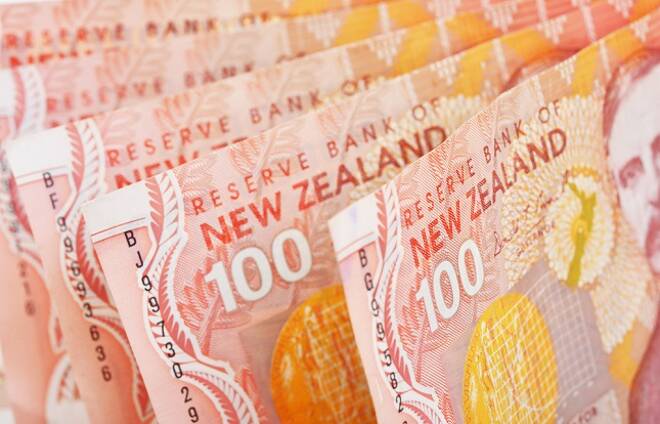Advertisement
Advertisement
New Zealand Dollar Surges on Patient Fed, Optimistic Trade Talks – Can Buyers Extend Rally?
By:
The strong momentum into Friday’s close suggests the rally will likely continue this week especially if the U.S. Dollar resumes its downtrend and an air of optimism over the timely end of the U.S.-China trade dispute lingers.
Since traders returned from the extended Christmas and New Year’s break, the New Zealand Dollar has been one of the most active and volatile currencies. It may have been thin, post-holiday volume that spiked the currency from .6706 to .6837 on January 1 and wild-computer generated trading including a “flash crash” that drove the Kiwi into .6591 on January 3. However, since that low, the currency has rallied to .6845 including two nearly one-percent one-day surges last week.
Needless to say last week’s rally was impressive, making the New Zealand Dollar the biggest winner among the major currencies. The move left investors wondering, “What was behind the strength, and will it last?
Last week, the NZD/USD settled at .6834, up 0.0098 or 1.45%.
Outside Events Fueling the Volatility and Impressive Gains
Attributing the NZD/USD rally to a solid domestic outlook would make some New Zealanders and the Reserve Bank of New Zealand happy, but this hasn’t been the case. Last week’s stellar gains were likely fueled by dovish comments from the U.S. Federal Reserve and a positive-outlook for U.S.-China trade relations. These events dampened fears of rapidly slowing global growth.
If you asked analysts in mid-to-late December about global economic growth in 2019, they probably would’ve told you to expect a profound slump in economic activity. However, the rebound in the global equity markets the past three weeks suggests that higher-risk asset investors may have overextended to the downside. Since the first of the year in addition to stock market gains, global rates have risen, emerging markets have strengthened and commodity prices have firmed. Most importantly, commodity currencies like the Canadian, Australian and New Zealand Dollars have outperformed.
Influence of Fed Chairman Jerome Powell and Central Bank Policymakers
Some investors are saying the buying spree started on January 4 when Fed Chair Jerome Powell greenlit the rallies in stocks, commodities and currencies when he acknowledged the on-going strength in the U.S. economy. His comments essentially quieted the critics who thought he was being too optimistic about the economy. However, he excited investors by saying the Federal Reserve would take a more patient approach toward policy decisions in 2019.
Positive Developments Over U.S.-China Trade Relations
Last week begin with two-days of mid-level trade talks between the United States and China in Beijing. Those couple of days went so well that participants added a third session of discussions. By the end of the week, the parties were planning for higher-level negotiations for later this month in Washington. This news helped drive the NZD/USD to its high for the week on Friday.
Will the NZD/USD Rally Continue?
The strong momentum into Friday’s close suggests the rally will likely continue this week especially if the U.S. Dollar resumes its downtrend and an air of optimism over the timely end of the U.S.-China trade dispute lingers.
There may be a few bumps in the road, however, due to the uncertainty over the U.S. government shutdown and its potential impact on demand for higher-risk assets. Furthermore, late in the week, investors were expressing concerns over economic growth in China, but investors may overlook this if they firmly believe that the end of the trade dispute (around the March 1 truce deadline) would eliminate the key threat to global economic growth.
About the Author
James Hyerczykauthor
James is a Florida-based technical analyst, market researcher, educator and trader with 35+ years of experience. He is an expert in the area of patterns, price and time analysis as it applies to futures, Forex, and stocks.
Latest news and analysis
Advertisement
